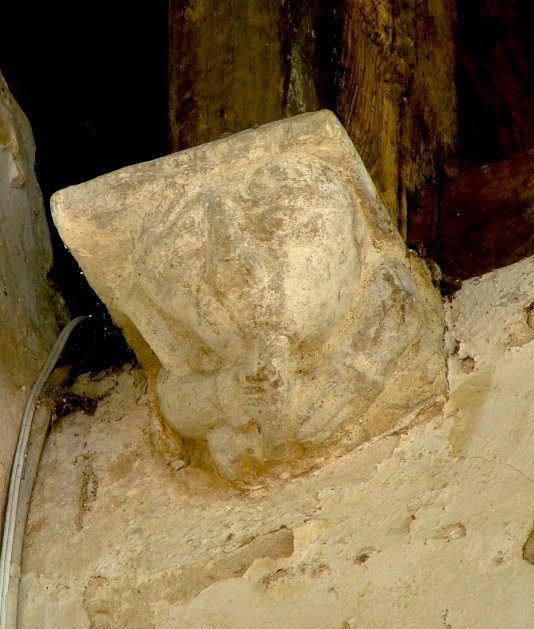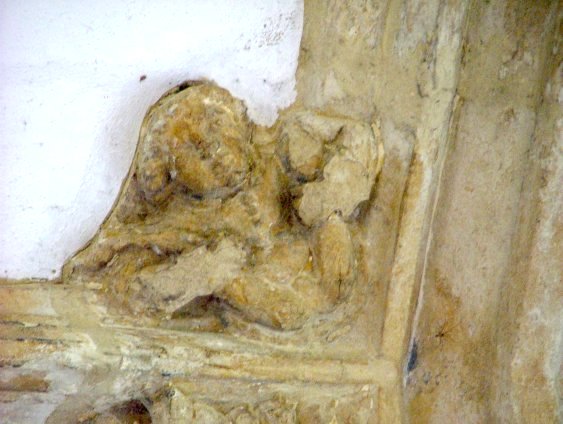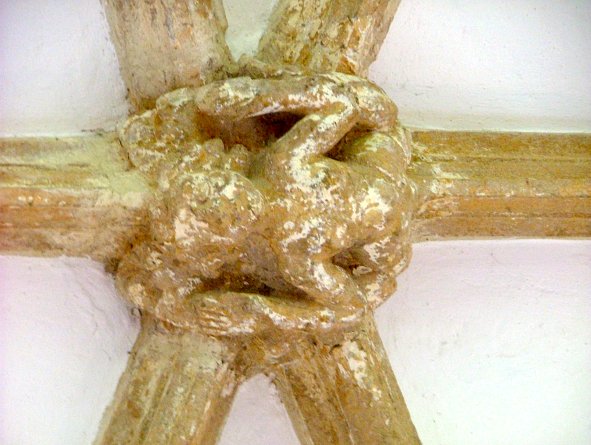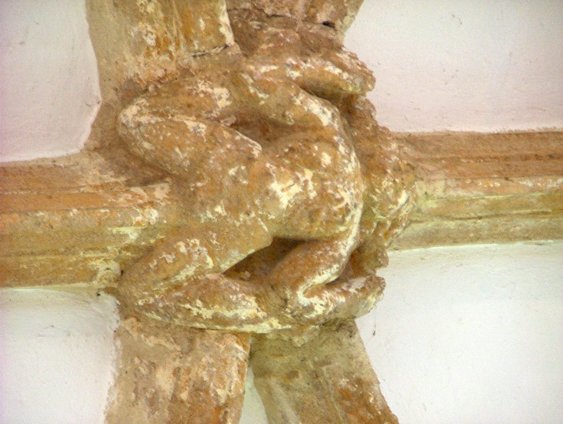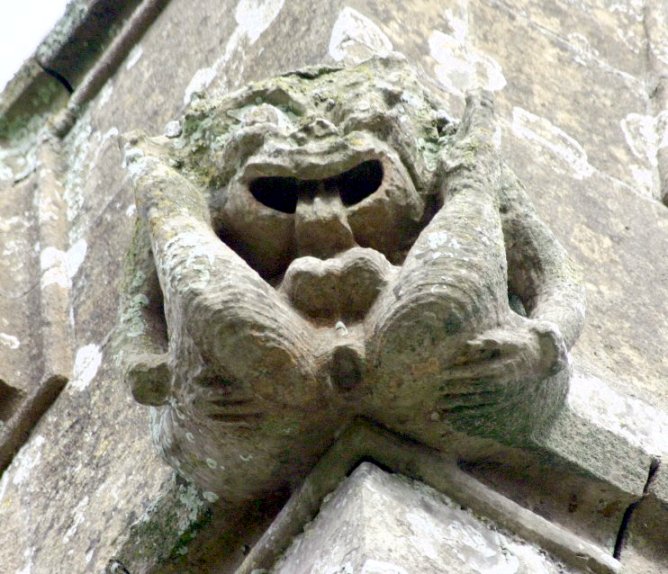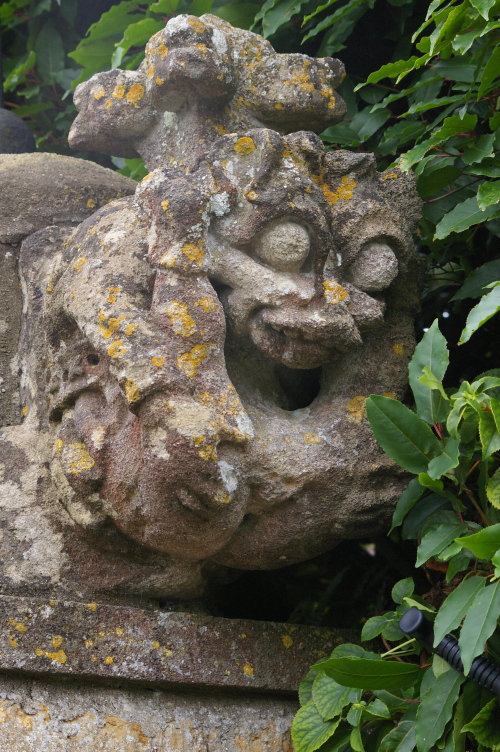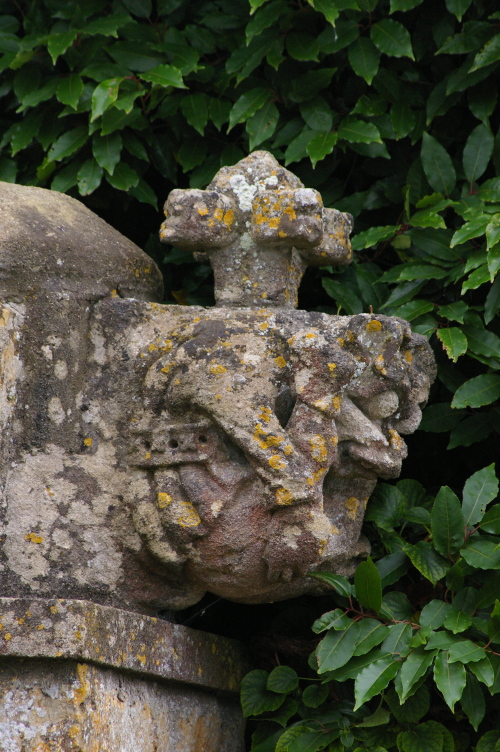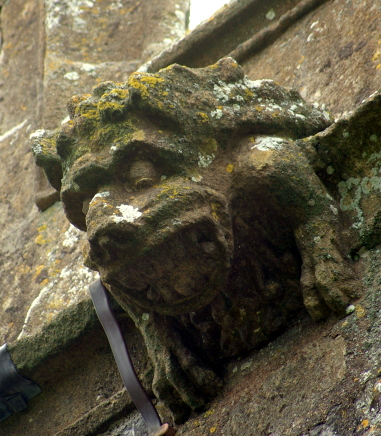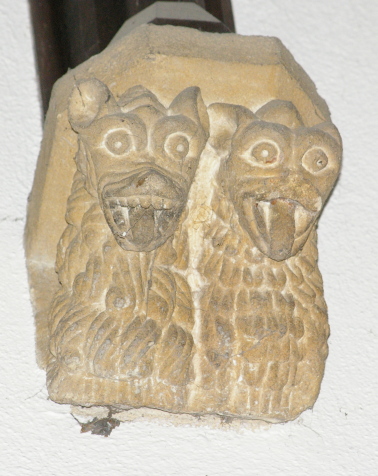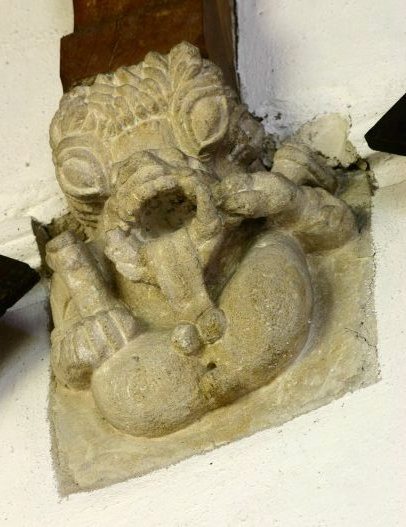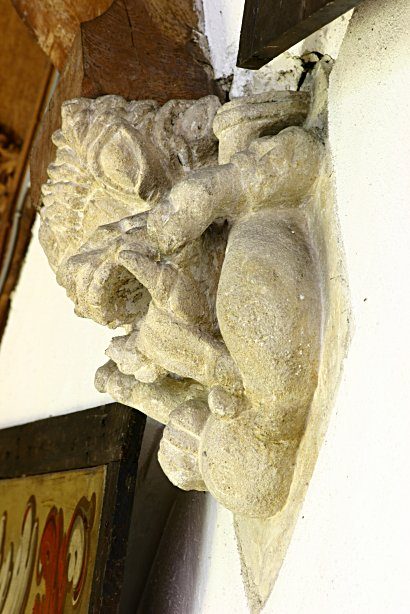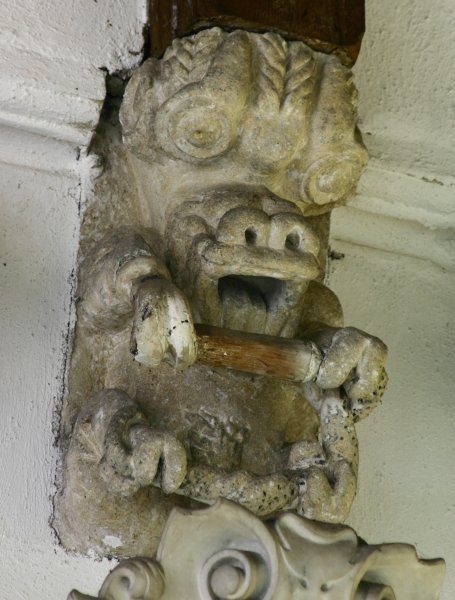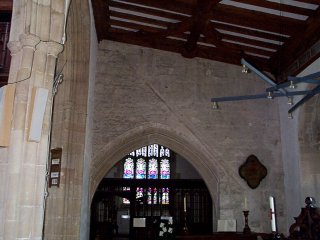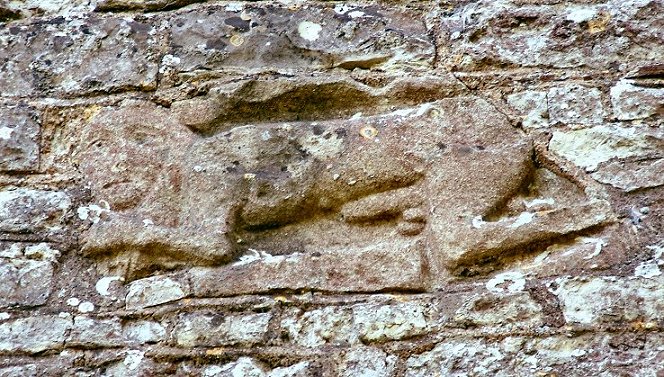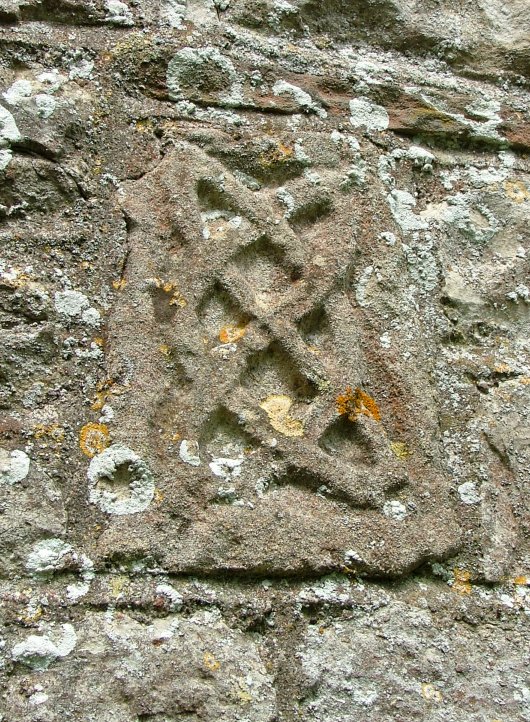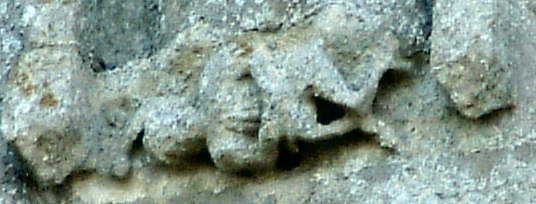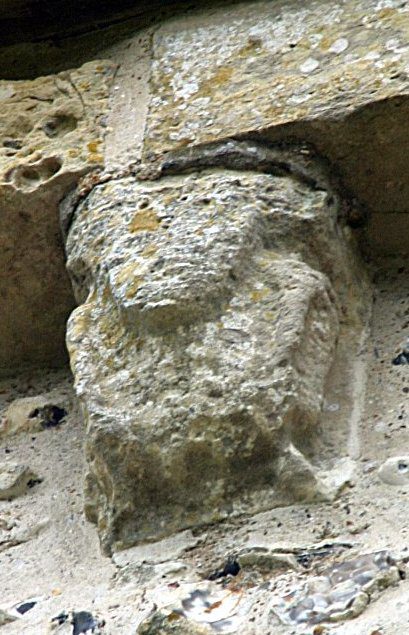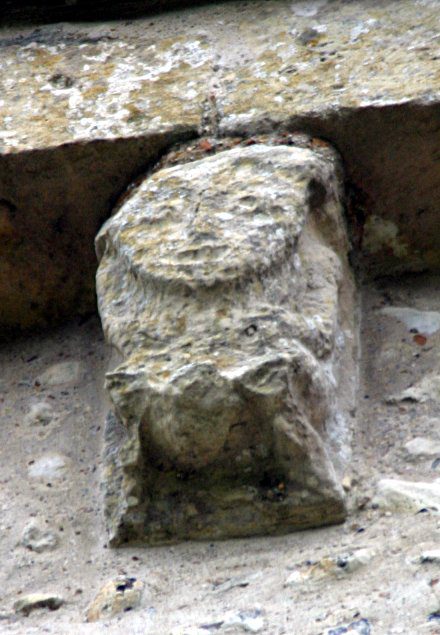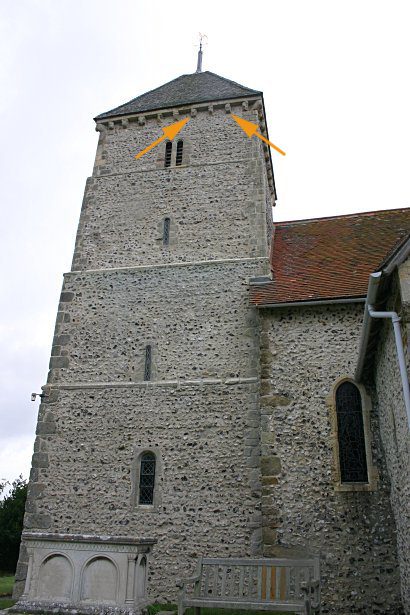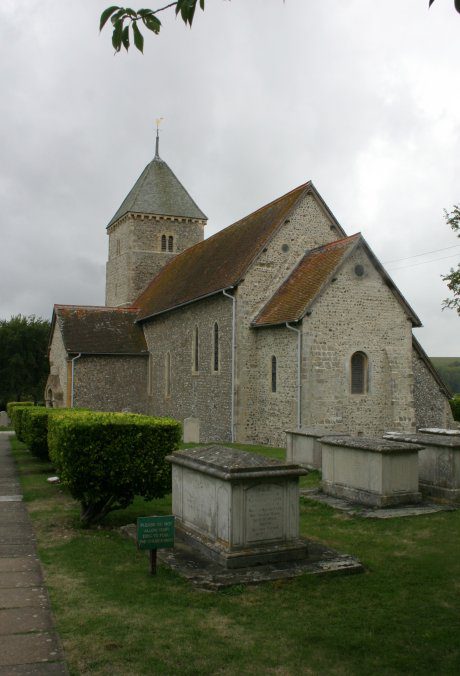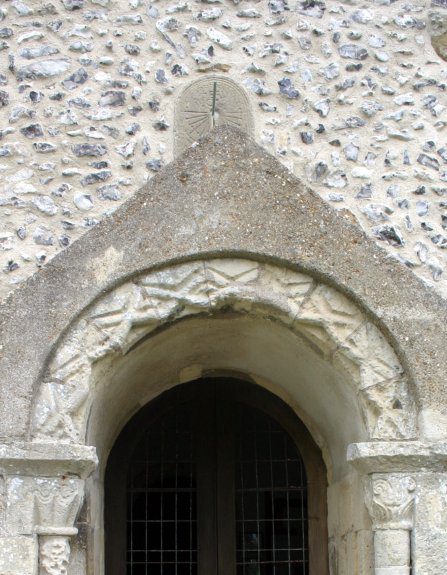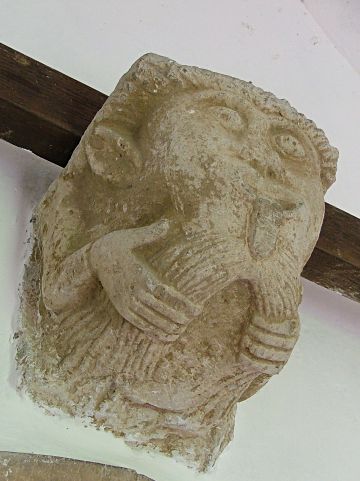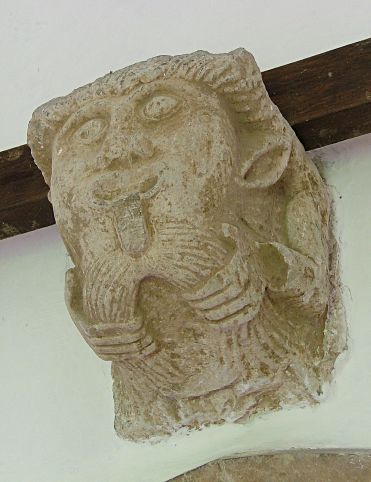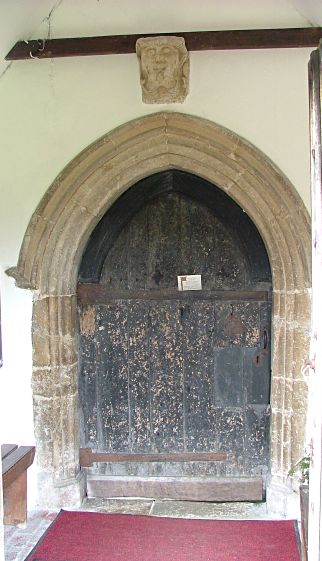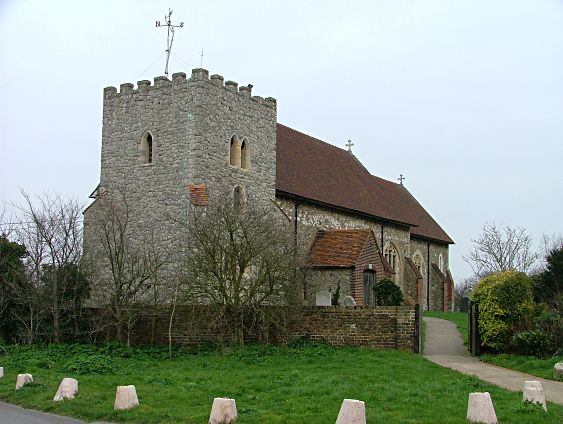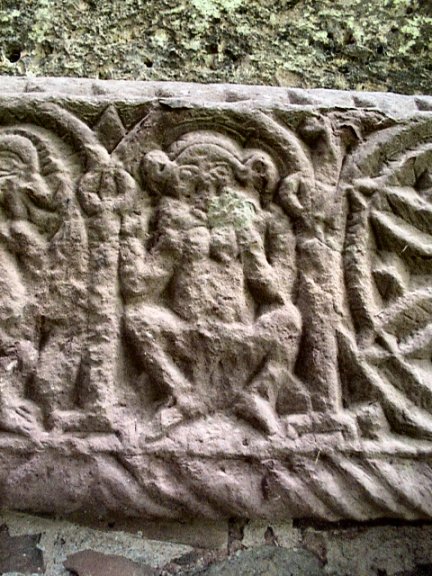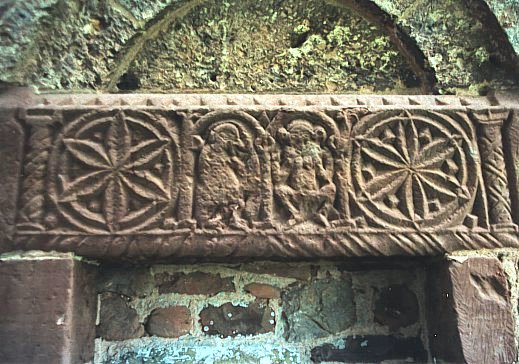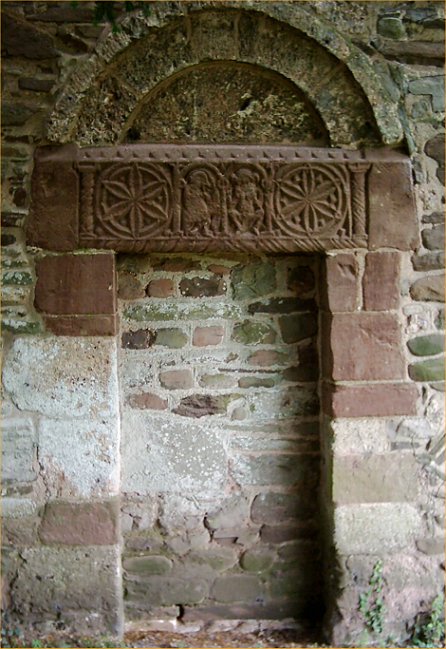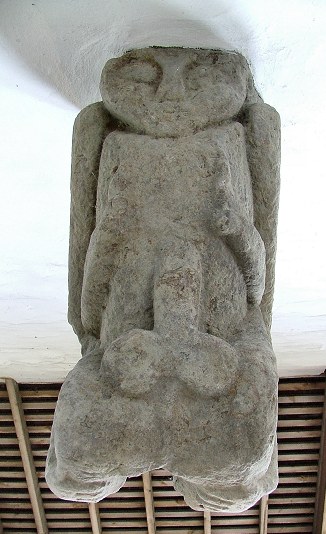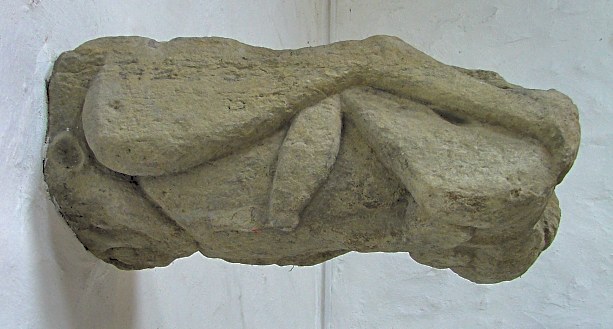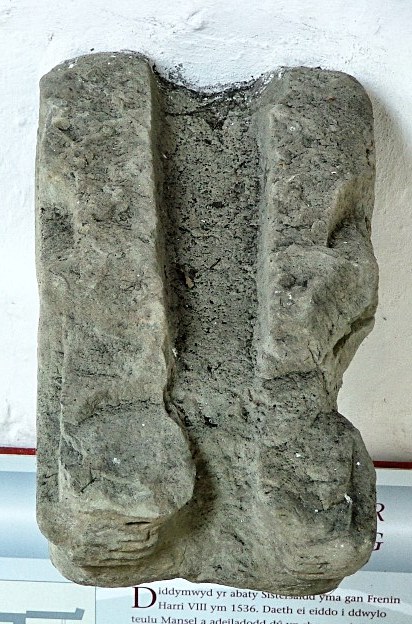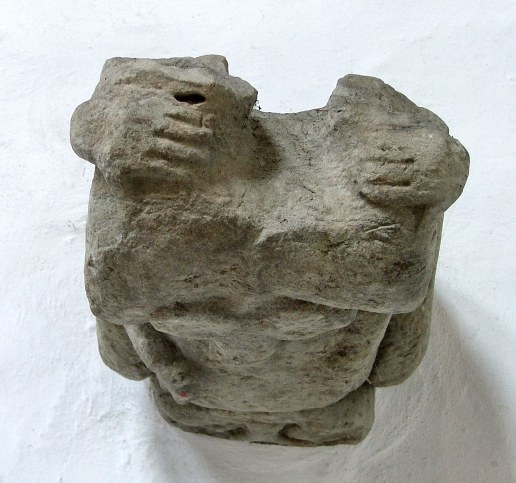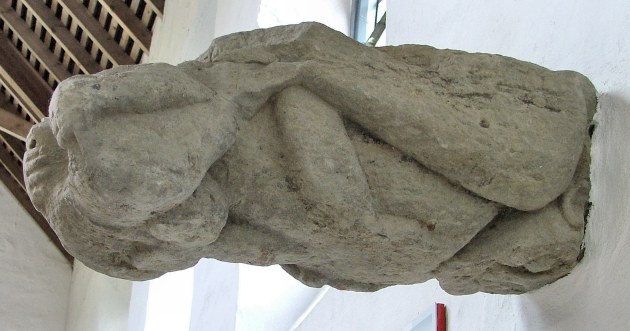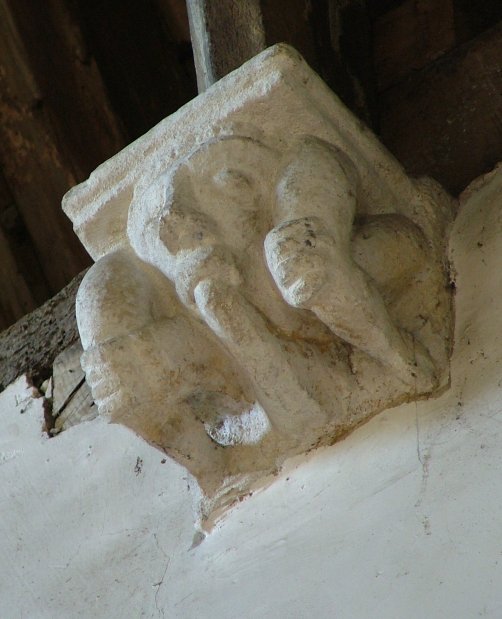
The Church
This figure resides high in the roofbeams of Avening Church Gloucestershire and has been described as a male exhibitionist by Malcom Thurlby in his paper on Studland church 1. The church at Avening is unique in being the only church commissioned by a queen. Namely Queen Matilda wife of William the conqueror. The story of the founding of the church has all the hallmarks of a romantic tragedy.
A Jilted Queen
In the year 1050, Brittric of Avening, Lord of Gloucester was sent by Edward the Confessor as an ambassador to Baldwin, Count of Flanders. It was here that he met Matilda who fell in love with Brittric despite him being married. However Brittric, who was said to be very pale (his nickname was Snow) rejected her advances much to the annoyance of Matilda. shortly after she became queen,she had the King disposses Brittric of the manor of Avening and had him thrown into prison at Worcester, where he died. Rumours have it that the death sounded very much like poisoning. Some years later the queen deeply regretted her actions and built a church at Avening in penance. The Queen consecrated the church in 1080 and gave a feast of a pigs head to the builders. This feast is still commemorated in the village as Pig Face Day on September the 14th where the villagers “feast” in the village hall.
The Figure
1 The Romanesque Church of St Nicholas, Studland (Dorset), Malcom Thurlby and Karen Lundren in Proceedings of the Dorset Natural History and Archaeological Society.
John Harding
